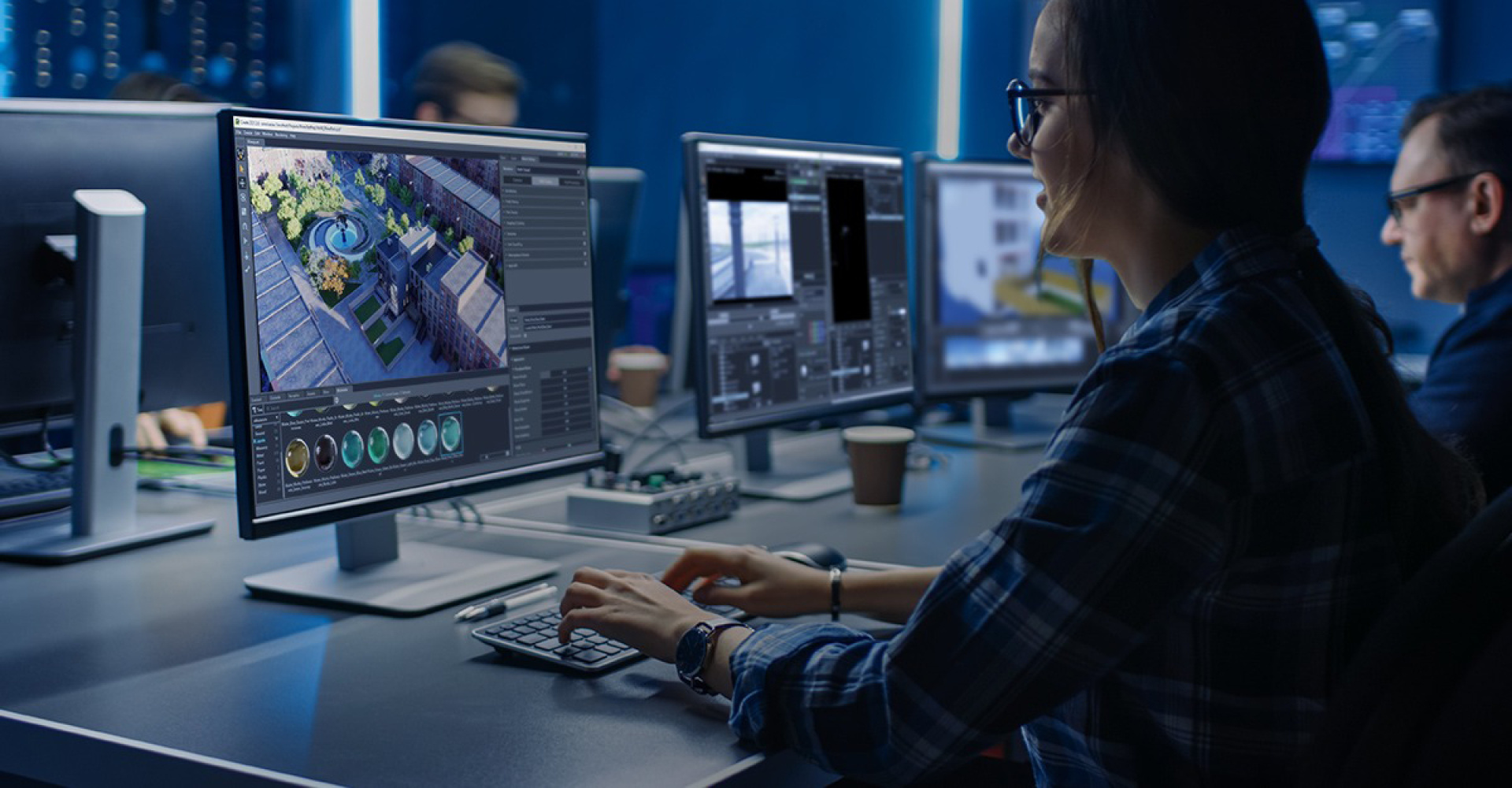
5 AI tools to elevate your digital design toolkit
Published by Admin on
Jul 29, 2024 3:14:40 PM
In recent years, artificial intelligence (AI) has increasingly permeated various industries, revolutionising how we approach tasks and solve problems. In the realm of design, AI has become a powerful ally, enhancing creativity, efficiency, and precision. From architectural visualisation (archviz) to game scene creation and graphic design, AI tools are transforming the way designers work, allowing them to push the boundaries of their creativity while streamlining workflows. As AI continues to evolve, its integration into design processes is not just a trend but a significant shift toward more innovative and effective practices.

Why designers are embracing AI
Designers are turning to AI for several compelling reasons. Firstly, AI tools can handle repetitive and time-consuming tasks, freeing up designers to focus on more creative aspects of their projects. For instance, AI can automatically generate detailed textures or optimise lighting in 3D scenes, tasks that would otherwise require considerable manual effort. Moreover, AI enhances precision, ensuring that designs meet exact specifications and quality standards.
Practical examples of AI in design are abundant. In graphic design, tools like Adobe Sensei can automatically adjust image composition and enhance photo quality. In architecture, AI-driven platforms such as Twinmotion enable designers to create realistic visualisations quickly by automating the rendering process. For game designers, AI can generate complex environments and character behaviours, significantly reducing development time. These applications demonstrate how AI is not just an add-on but a fundamental component of modern design workflows.
Our picks
MidJourney
MidJourney is an AI-based tool that helps designers create concept art, illustrations, and graphic designs by transforming text prompts into images. It’s particularly useful for brainstorming sessions and early-stage design exploration, providing a quick way to visualise ideas and iterate on concepts.
DALL-E
Developed by OpenAI, DALL-E is a neural network-based tool that generates images from textual descriptions. This capability is incredibly useful for designers looking to create specific visual elements based on client requirements or conceptual briefs. DALL-E’s ability to interpret and visualise complex descriptions makes it a valuable asset for both graphic designers and illustrators.
Artbreeder
Artbreeder is an AI-powered platform that allows users to create and explore new images by blending existing ones. It’s particularly popular among digital artists and game designers for its ability to generate unique characters, landscapes, and abstract art. Users can manipulate various parameters to evolve their images, making Artbreeder a powerful tool for exploring creative possibilities.
Leo™ by GetLeo.ai
Leo™ is the world’s first engineering design copilot powered by generative AI. It transforms text, sketches, specs, and CAD constraints into fully assembled 3D CAD models. Whether you’re an engineer, designer, or part of a company, Leo streamlines the design process and boosts innovation.
Uizard
Uizard simplifies the process of creating user interfaces and prototypes. It enables users to transform hand-drawn sketches into digital designs, making it particularly useful for quickly generating and iterating on UI concepts. By leveraging the machine, it learns to recognise and convert sketches into editable wireframes and high-fidelity prototypes.
What’s next for AI and design?
The integration of AI into design workflows offers numerous benefits, from automating repetitive tasks to providing new ways to visualise and experiment with ideas. One significant reason designers are eager to adopt AI tools is their ability to develop sophisticated configurators. These tools allow for dynamic customisation and visualisation of products, catering to the growing consumer demand for personalised experiences. James Dunlop Textiles has seen great success with its Visualiser tools that allow customers to test fabrics for both drapery and upholstery. Market research indicates that consumers want the ability to explore a wider range of products than what is typically available in stores and to use in-store tools to visualise their choices. AI tools can meet these needs by enabling interactive and immersive configurators that enhance the shopping experience and drive sales.
AI is also transforming the design landscape through its application in various creative fields. For instance, NVIDIA Omniverse, which has Twinbru's 3D fabric textures in its digital asset library, supports experimentation with generative AI using ChatGPT, allowing designers to generate content and ideas quickly and efficiently. NVIDIA's suite of AI tools is renowned for its cutting-edge capabilities, which include advanced simulations, realistic rendering, and AI-driven content creation. These tools enable designers to push the boundaries of their creativity and produce high-quality, visually stunning work.




AI is proving to be an indispensable resource for designers across various disciplines. As these tools continue to evolve, their impact on the design industry will only grow, ushering in a new era of innovation and creativity. For us at Twinbru, an exciting step in the future will be seeing our 3D fabric textures form part of AI-driven tools. Although they are part of several industry-leading platforms, the evolution of AI technology in design creates exciting possibilities where our digital fabrics can be part of extraordinary visual creations.
Tags:
3D Rendering,
3D Design,
3D Fabric Textures,
Artificial intelligence,
AI,
Digital Visualisation,
Digital Design,
Digital Fabrics,
Interior Visualisation,
Design Tools